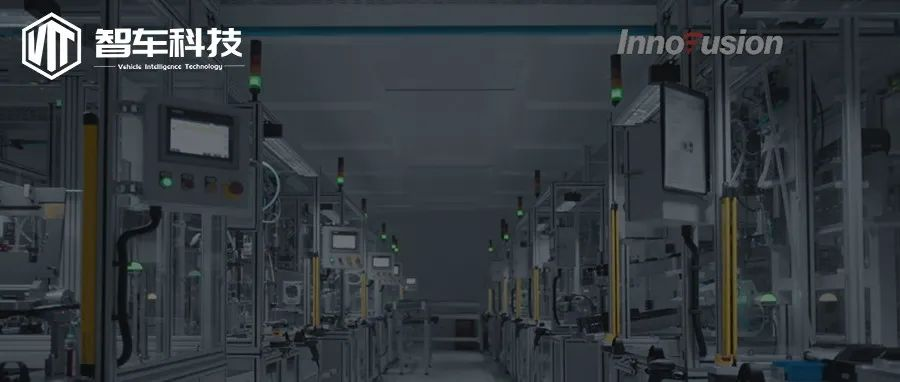Introduction
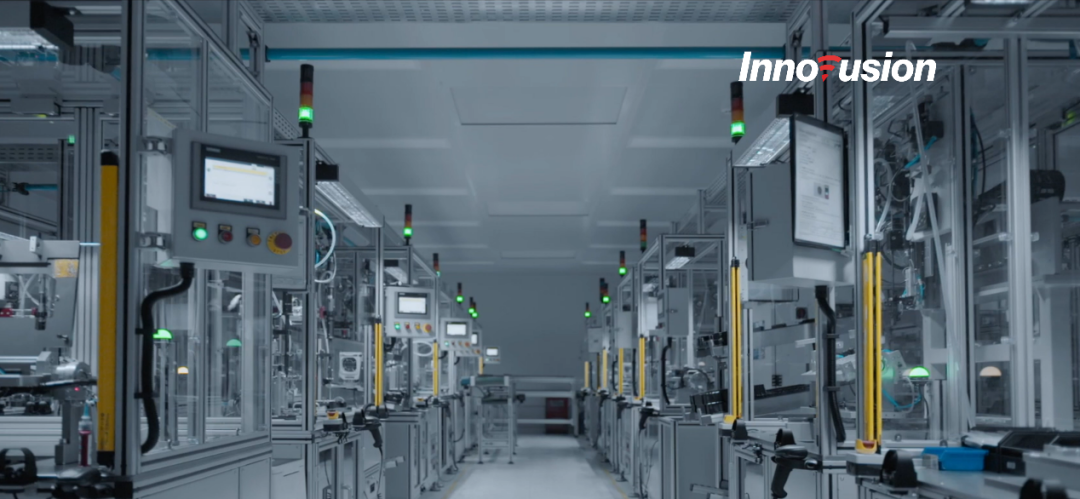
On March 28th, NIO ET7 equipped with Innovusion LiDAR began delivery, marking the first time in the world that a super long-range high-precision LiDAR has been delivered to end-users, and making Innovusion one of the world’s first providers of high-performance LiDAR to achieve large-scale production. This is of great significance for the mass production of high-performance LiDAR on vehicles.
Looking back to January 2021, NIO threw a heavyweight bombshell at the “2021 NIO DAY” – the first intelligent pure electric sedan ET7 will be equipped with “NIO Autonomous Driving” and put on the market for the first time, which is the first time that domestic automakers have dared to introduce autonomous driving in product introductions. “NIO Autonomous Driving” reflects NIO’s ambition.
At that time, there was one person who was particularly looking forward to the delivery of the ET7 production. He is Baosong Wei, co-founder and CEO of Innovusion, which makes him nervous. However, the progress of the ET7 project from product A sample to C sample witnessed Innovusion’s rapid growth. With the core in hand, he was confident.
Why the Core Matters
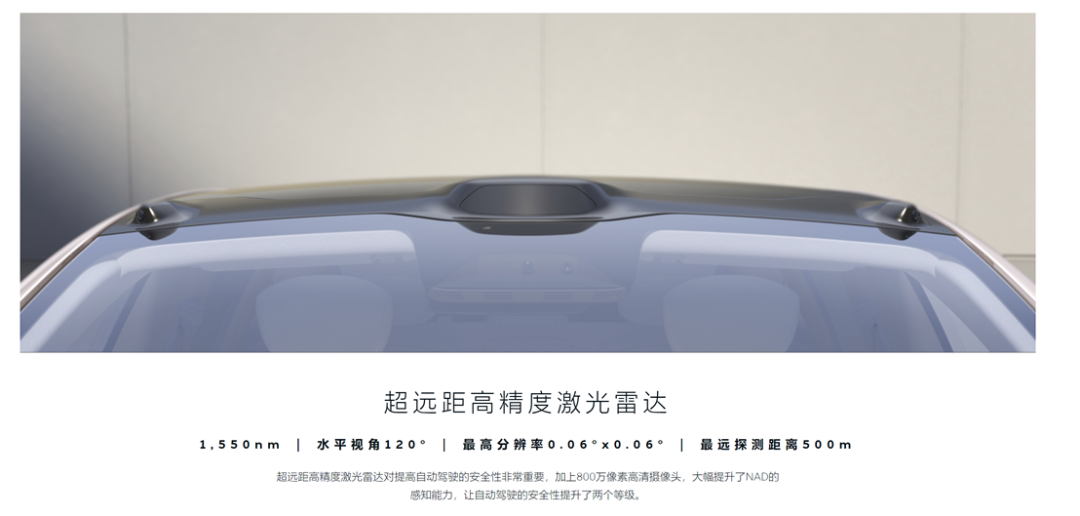
The core business of Innovusion is the research and development and production of image-level and super long-range LiDAR, covering applications such as autonomous driving, vehicle-road collaboration, and rail transit. Seeing the company’s potential, NIO Capital led the A round of investment in Innovusion three years ago; and later the NIO ET7 chose standard Innovusion LiDAR, and the cooperation between the two sides is inseparable.
In addition to this, Innovusion has also actively cooperated with many domestic industry-leading enterprises such as car networking, rail transit, smart highways, and industrial automation. In January 2022, Innovusion officially reached a strategic cooperation with the leading autonomous driving company, Mogo Carlink. In the next three years, the two sides will deepen their cooperation based on their respective forward-looking technological advantages and deep resource layout, focusing on autonomous driving, vehicle networking, and other business scenarios to promote the large-scale production application of high-performance LiDAR and accelerate the commercialization of high-level autonomous driving.In the first quarter of 2022, NIO’s flagship sedan, the ET7, equipped with Innovusion’s Falcon LiDAR, will be officially delivered for mass production, marking the world’s first batch of high-performance LiDARs that have truly been put into mass production on cars.
Innovusion was founded in 2016 and spent the first two years focusing on development. The core team consisted of two parts: people from high-tech companies in Silicon Valley with a focus on technical research and development, and experts from China’s automotive industry who brought many traditional engineering development methods and new development concepts. The collision of these two types of talent and expertise has enabled the company to develop and produce competitive products. Currently, Innovusion is also actively expanding its customer base in the United States and Europe. With accurate and high-performance product positioning, it will help people achieve truly safe and reliable autonomous driving.
Why 1550 nm?
Why did NIO choose Innovusion? And why did Innovusion choose 1550 nm technology?
LiDAR is a very new thing, especially for cars, and it’s the same for everyone. Although Innovusion’s architecture is similar to that of Lunimar, a US LiDAR company, they tackled one challenge after another in independent research and development. In particular, China’s automotive industry used to follow the leading Western technology, with others using it first and China adapting and customizing it. But now Innovusion is doing something unprecedented and requires unconventional approaches.
“Lidar is new to the world, and we are at the forefront of it. We have entered an uncharted territory,” said Bo Junwei. The reason why NIO chose Innovusion is that the latter’s technology is currently at the forefront of the international industry.
Speaking of cutting-edge technology, we have to mention the 1550 nm wavelength LiDAR. Whether it can be used for autonomous driving perception depends on how deeply one understands its essence. Bo Junwei, who has a degree in physics, first looked at the principle.
Safe autonomous driving requires reliable perception, and using a 1550 nm wavelength LiDAR is crucial for safe driving. It can achieve longer detection distances and more precise object and obstacle recognition, thereby creating more reaction time for people and vehicles to improve the safety and comfort of autonomous driving.
The advantages of 1550 nm are mainly reflected in the following aspects:
-
Meet human eye safety requirements: Using the 1550nm wavelength LiDAR, which is crucial for safe driving, can meet human eye safety requirements even under relatively high power;
-
Strong anti-interference ability: The high brightness of the light source and better collimation of the light beam result in strong resistance to sunlight interference.- Long detection range: Innovusion LiDAR has a maximum detection range of up to 500 meters, which can reach 250 meters in a 10% reflectance scenario. Early detection and perception of distant objects is crucial to allow sufficient time to react.
-
High detection accuracy: Angular resolution describes the imaging system’s ability to distinguish between objects in the scene. Innovusion Falcon LiDAR has an angular resolution of up to 0.06°*0.06°, which is true imaging-level accuracy.
-
Reliability: The architecture of the Innovusion Falcon LiDAR is stable and reliable, meeting the performance and safety requirements of automotive regulations for perception components.
In theory, there is no problem. Some people say that the reason why 1550nm lasers cannot be used in cars is because they have not been used before and are not suitable for high temperature and low-temperature environments.
Is this really the case? Take a closer look at the core components of the laser itself, and you will find that the 1550nm fiber laser is a module that includes a pump light and a seed light. These two light sources are similar to the 905nm laser, which can be used in cars, so 1550nm should also work. Then, look at the composition of the material system itself, silicon, indium phosphide, or indium gallium arsenide? Flip through a physics book, and these materials can withstand temperatures of 150℃ without any problem. The first problem is solved. The next step is how to do it.
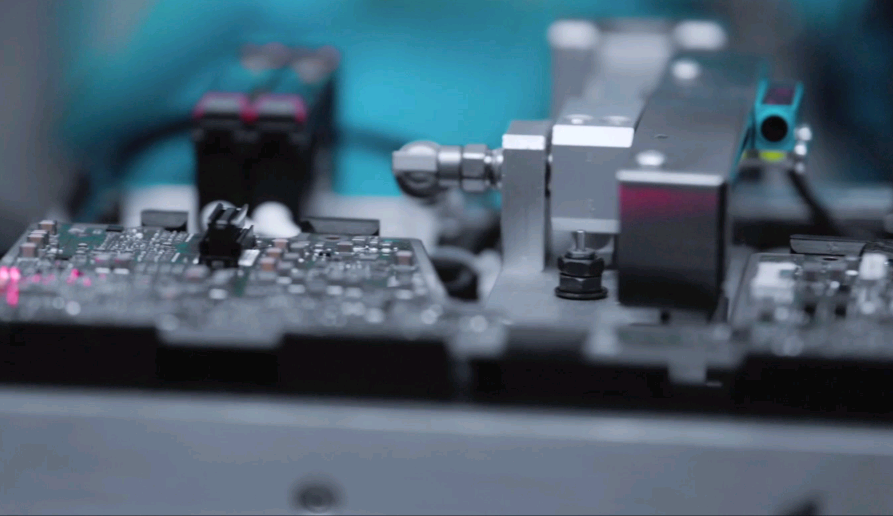
Are there any suppliers in the industry that provide modules to achieve this temperature? No, because there was no demand before, and previous lasers were only used for optical communication, which required 24-hour operation for 30 years and had a relatively long lifespan. The lifespan required for cars is much lower. Looking at the operating environment, the optical communication environment is slightly better, unlike cars, which have extreme conditions, but high-temperature issues can be solved. In addition to the chips themselves, the laser also has various small optical packaging devices and packaging materials, which can withstand high temperatures and can find packaging processes that meet high requirements. All of these prove that 1550nm lasers can be made.
How to build the supply chain?
Having seen the essence of things, the next step is execution. Bo Junwei once said, “First of all, the industrial chain is layered and requires division of labor cooperation. No one can do everything. Reliable suppliers and their suppliers need to work together, reach a consensus, and invest together.”
A very good opportunity is that after years of market cultivation, everyone has reached a consensus on smart cars and new technologies: autonomous driving is a very promising thing. Ten years ago, no one thought Tesla would be so popular. Now that this model has been successful, early investment will yield results.## When will it be the year of mass production of LiDARs?
Some suppliers in this industry may not see short-term profits, but it is still beneficial for both the industry and the suppliers to get involved. However, not all suppliers are like this. Some are short-sighted and will not do business if the quantity is low. Of course, there are always far-sighted suppliers who can work together.
At this point, trust needs to be established and communication needs to be thorough. “We will not take away their business, but we can cooperate. Our cooperation is much deeper than normal supply chain partnerships, and we constantly communicate with the suppliers’ suppliers, with mutual recognition of each other’s requirements,” said Junwei Bao. Although some suppliers have never done anything in the automotive industry and do not understand the industry, they are willing to work with partners who are open-minded and accept the practices of the automotive industry, including quality management, systems, and supply chain construction. In addition, entering the automotive supply chain is also a guarantee for the enterprise, and everyone depends on each other. Unlike the relatively short-sighted consumer supply chain, which requires iteration every six months to a year, once an automotive product is set, there will be long-term returns.
With the help of domestic and foreign experience, Innovusion has helped the LiDAR industry to be at the forefront of high-performance sensor industries globally. This is the first time in recent years that precision equipment has stood on the same starting line with the world, and even has a leading momentum. As Bao Junwei said, the global vision is based on a global layout, making full use of the essence of the global supply chain, and maximizing all advantages to achieve the most efficient and fastest execution.
Bao Junwei is proud that Innovusion is one of the few laser radar companies truly involved in global layout for development and market expansion. In terms of testing, validation, and market development, Innovusion’s domestic and foreign teams are relatively balanced. By using the advantages of global resources, Innovusion first obtained the first batch of truck pilot customers, and then entered the vehicle-road cooperative industry, participating in China’s intelligent connected traffic and cooperating with leading companies in the industry such as Baidu and Sixense to implement projects.
Bao Junwei once said that the development of supply chain resources is divided into two stages: one is the development of a universal platform, which has been ongoing; the second is the customization of vehicle models, such as NIO’s requirements for products that far exceed those of other car companies. What Innovusion needs to do is adapt and customize the model, mainly for physical form changes or some small adjustments. This requires new development resources, but more on mechanical and electronic adaptation. With the advancement of team redundant capability, it is easy to support more projects.
In Bao Junwei’s words, the core achievement of more than a year is “bringing together a group of very good supply chain partners who have the same consensus as us to get things done.”## Was 2021 the year of mass production of lidar systems or the year of internal competition? The industry’s viewpoint is divided. Bao Junwei once said, “2022 will be the first year of the mass production of lidar-supplied vehicles. Before that, although many lidars have been installed in cars, the market response has been limited.” In the years leading up to the adoption of lidar technology there were some voices expressing skepticism, but when it was finally introduced, car manufacturers found that they had no use for it, or that the effects were not significant, especially in the case of the Audi vehicles that were equipped by Valeo, Continental, and Denso.
The lidar systems installed one year ago on XPeng vehicles and the freshly-released SAIC R brand are genuine mass production devices. However, many companies making lidar systems claim that mass production will only occur in 2022. Innovusion was the first to introduce mass production in 2022, but other companies, including XPeng, SAIC R, SAIC Zhijue, and Jidu, will soon do so as well.
Currently, people have a strong expectation of autonomous driving because of increasingly congested traffic and increasingly complex roads, which require vehicles to complete tedious tasks and also enhance travel safety. Autonomous driving will provide significant social value, but the technology must be used to solve the “long tail” scenario problem, which accounts for 5% of usage scenarios.
As part of their collaboration, Innovusion and Juesheng Electronics established the first fully-industrialized, automotive-grade lidar production line, which is the most advanced lidar production line built on a production line of non-standard equipment for the production of automotive-grade components, with an annual output of up to 100,000 units.
From a product architecture perspective, it was considered in the design process five years ago that the materials and components used could not cause bottlenecks in production, as the product was designed for mass production. The 1550-nm laser, two-dimensional scanning, and mixed solid-state scanning, the supply chain is mature, the performance meets L3+ autonomous driving requirements, and the product integration and modular design are very high, making it easy to mass-produce in an industrialized manner.
In terms of specific details, the optoelectronic chips of the core material share optoelectronic communication lasers, with shipments of one million or even several million per month not a problem, and the electric motors are a very mature industry. The glass chip is also very mature. As the production line equipment does not require any special requirements, it is not a problem to increase production capacity by multiple times, with a period of three to six months.
How to eliminate the “long tail” scenario?There are two approaches to autonomous driving. Tesla takes the biomimetic route, using planar vision for self-driving because humans do not require stereoscopic vision. However, due to technical reasons, Tesla’s approach has consistently missed deadlines since its self-driving release in 2014. On the other hand, the majority of market players, whether traditional automakers or advanced self-driving companies, believe that multiple sensors should be fused together, particularly lidar, cameras, and millimeter-wave radar. This is necessary to see what the human eye cannot and to ensure self-driving safety to the greatest extent possible.
As seen in the scene filmed in Mountain View, the forest in the distance, the trees on the road, and the trees in the car all overlap entirely with the lighting scenario, making machine recognition even more challenging. Therefore, Bao Junwei pointed out that the pure vision solution is practical, but certain scenarios are definitely not covered, and for critical safety issues, all problems must be solved.
Similarly, the combination of image recognition and millimeter-wave radar only provides two-dimensional space for simple object recognition, whereas lidar, particularly high-performance lidar, outputs three-dimensional space data with angle switching for the car to perceive every detail of the 200-500 meters ahead, which is crucial for safe driving.
Lidar’s ultra-long detection distance and super-high resolution can detect not only cars, pedestrians, bicycles, and motorcycles on the road but also very small obstacles. For example, a plastic bag that may cause a tire blowout can be easily spotted 100 meters away in three-dimensional space, greatly improving object detection reliability.
If several cars broke down in front, human eyes cannot see past 180 meters, but the point cloud provides a very clear view, making it very easy to use a straightforward algorithm to identify incidents 160 meters ahead. This is also the reason for many typical accidents, such as Tesla’s collision with a stationary vehicle because it is difficult for the camera to handle such long-tail scenarios. Autonomous driving relies on data detection to gather perception for planning, decision-making, and execution, which requires approximately 4 to 7 seconds when combined, with a warning distance of 100-150 meters. If a miss occurs at such a far distance, there is not enough time to brake.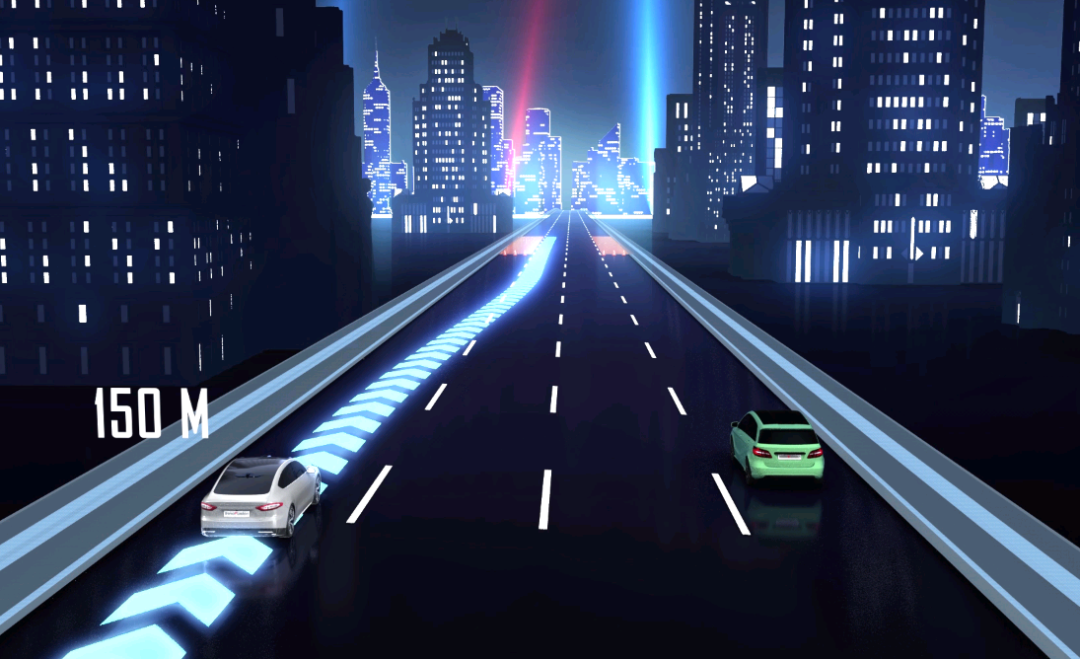
As mentioned earlier, Innovusion’s product can detect a distance up to 500 meters, and in the case of 10% reflectivity, it can detect up to 250 meters, making it the laser radar with the furthest detection range currently available. This means that it is possible to detect some scattered objects and pedestrians up to 150 meters ahead, while competitors under the same conditions can only detect up to 100 meters and can only see pedestrians about 50 meters away, which is quite dangerous because there is insufficient time for warning.
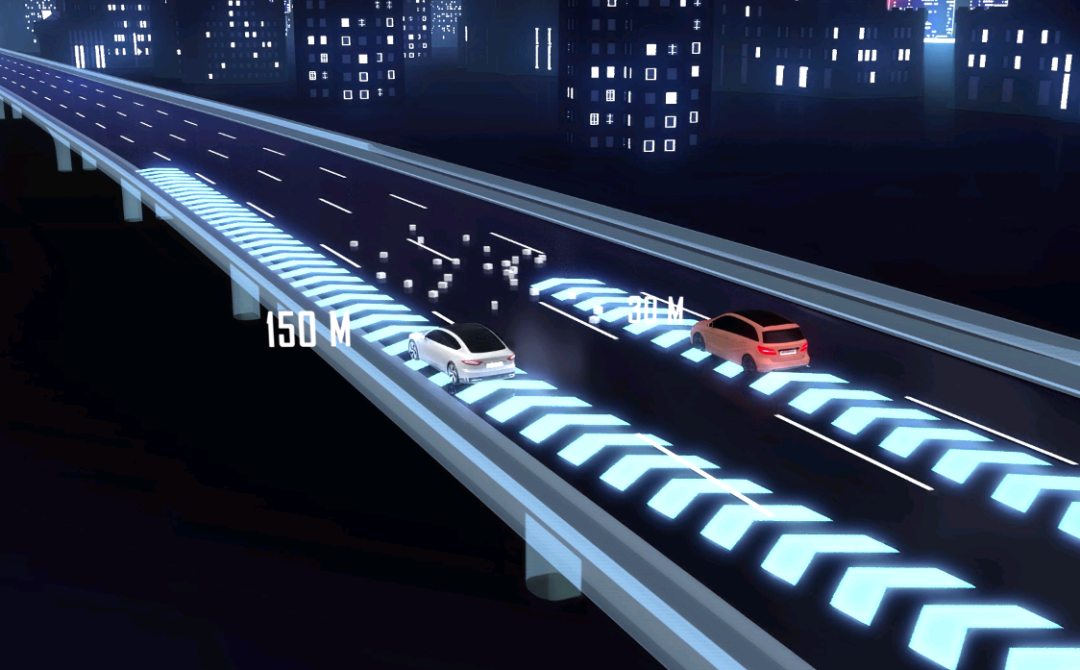
Another scenario is when the car in front drops a tire. With a detection range of 250 meters, it can detect dark objects (such as the tire) at 120 meters, while other low-performance laser radars can only detect up to 40 meters, with insufficient response time. Other irregularly shaped, relatively small scattered objects can also be detected within 100-150 meters, providing sufficient time for warning.
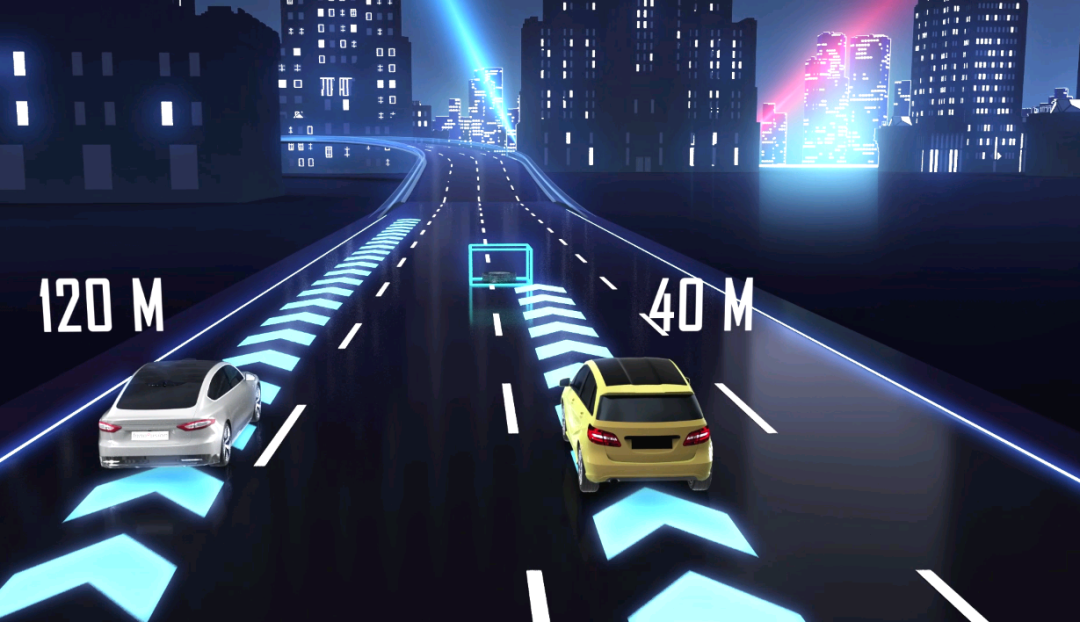
Ba Junwei once emphasized that to truly achieve reliable autonomous driving, it is necessary to see far enough and not miss any critical distance that is around 100 meters. A laser radar with sufficient detection range and clarity can ensure reliability. Like Luminar, Innovusion is doing the same thing. Some companies are still going through the slow process of integration. As time goes by, everyone will converge to the same level, just like twenty years ago when the technology focus of intelligent mobile phone solutions all came together eventually.
The core function of a laser radar is to scan all kinds of long-tail scenarios in autonomous driving, and it must neither miss any detection nor make a false report. “We believe our product has the best performance in the world, but this performance is just passing if we want to achieve reliable L3 or above” he said.
Regarding the technical roadmap, Innovusion chose a hybrid solid-state two-dimensional scanning method, which has significant advantages over mechanical scanning, with better cost-effectiveness. Compared with pure solid-state laser radar, its performance is high enough, while many pure solid-state solutions, especially the fast-flash solutions, have a very short detection range and are not suitable for autonomous driving. Two-dimensional scanning can flexibly adjust the distribution density of points in the two-dimensional space, making the point distribution reach the optimal state required by the perception system.The reason for choosing a 1550 nm laser wavelength is that it can use a slightly higher laser power, it is safer for human eyes than 905 nm, and 905 nm wavelength is very close to visible light, and human eyes have poor tolerance to it. Poorly handled can be dangerous, and industry regulation is relatively strict, so if the power can’t go up, the detection distance will not be far.
1550 nm products have been polished for many years, and the first-generation product performance has far exceeded 905 nm, which has reached the performance ceiling, at most 150 meters, and less than 100 meters for small objects. The 1550 nm technology will become more and more mature, and its expandability will become higher.
In terms of scanning methods, Innovusion has gone from less than ideal mechanical scanning and one-dimensional scanning to two-dimensional scanning in one step, which is also a leading status in the next few years.
Regarding the call of some car manufacturers for “don’t talk about less than 4”, Bao Junwei believes: “Everyone talks about L3 and L4 too purely. Future driving is scene-driven.” If we want to achieve the true AutoPilot function planned by Tesla and achieve the goal of hands-free, eyes-free, and brain-free driving, one sensor is enough in the high-speed scenario. With a 120-degree viewing angle on the highway, when it is certain that there is no need to change lanes, just stay on the road and let the driver take control of the on and off ramps. Even in case of malicious insertion, it will not insert quickly from the side or rear, so 120 degrees is enough. In other scenarios where other functions are needed, such as quickly passing through the gap between cars or driving on city roads, which require processing complex information, intricate intersections, etc., 360-degree coverage is needed.
Although price is also a trend that the industry will pay attention to in the next few years when paying attention to the performance of LiDARs (detection distance, resolution, power consumption, etc.), Bao Junwei once said: “We believe that our product performance is currently the best in the world, but in the future, as the level of automatic driving continues to improve, and everyone pays more attention to safety, we will continue to improve performance, that’s to improve the detection distance and detection accuracy.”
Bao Junwei believes that the trend that the industry basically recognizes is that in several years, the cost of long-range LiDAR for forward-looking will be around 400-500 USD. Technological progress may place costs on improving performance rather than reducing costs. Everyone still hopes for higher performance. Short-range LiDAR, such as delivery trucks, robots, and sweeping robots, will be reduced to several hundred yuan.
It has been mentioned above that even the best LiDAR has just reached the passing line to achieve reliable L3 or above. Having passed does not mean it is perfect. As the one who pays for the car, safety comes first. If there are two choices: one is that, according to today’s products, the same performance will be halved in price in five years; the other is that the performance will be doubled or even tripled at the same price, which one will he choose?Life is priceless, safety is priceless. Even a small change can have a huge impact on vehicles, especially for autonomous driving. The danger of accidents is always present. Therefore, people are willing to accept how to reduce the accident rate of autonomous driving even further under existing cost conditions, and continuously reduce accidents.
Can we achieve breakthroughs?
From the original mechanical to the current solid-state, the price of lidar has dropped a lot. If Tesla uses lidar, it will make autonomous driving even more invincible. Domestic car companies can better participate in competition and shorten the gap through the upgrading of lidar sensors. This is the consensus of most people in the industry about lidar. Whether we can achieve breakthroughs may still be a bit uncertain.
As Li Bin said at “NIO Day”: “Every improvement in safety is worth striving for.” After all, the original intention of using lidar was also for safety!
This article is a translation by ChatGPT of a Chinese report from 42HOW. If you have any questions about it, please email bd@42how.com.
